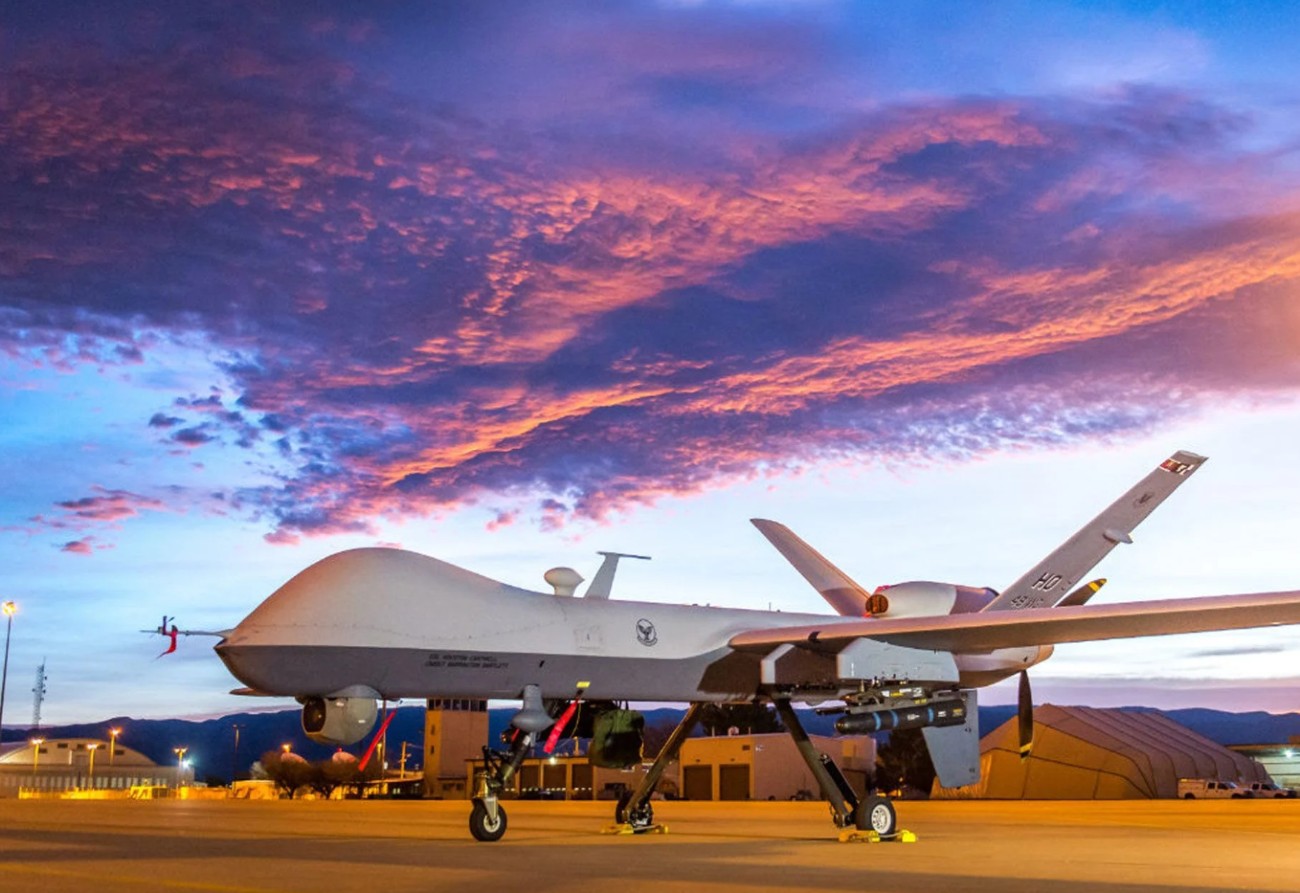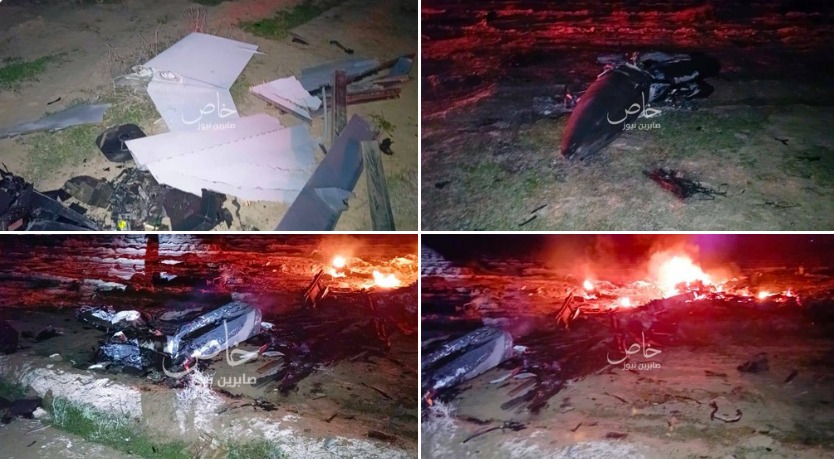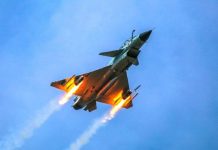India finally signed a $3.3 billion deal with the United States to acquire 31 MQ-9B High Altitude Long Endurance UAVs manufactured by General Atomics, more than a year after the purchase was approved by the Indian Ministry of Defence (MoD) in June 2023.
The Indian Navy is poised to acquire 15 drones, bolstering its maritime surveillance and strike capabilities. At the same time, the Indian Army and the Indian Air Force will each receive eight drones to strengthen their ability to monitor enemy activities along the northern and western borders.
Although India was eager to obtain these advanced UAVs, considered the eyes and ears of contemporary warfare, the deal hung in the balance because New Delhi considered the price outrageous.
In June this year, a US delegation visited India to work out a deal that would be acceptable to the country. The Cabinet Committee on Security (CCS) approved the acquisition of 31 Predator drones only last week.
The agreement was signed on October 15, crossing the last hurdle. India has finally taken the plunge, despite the recent ‘shoot-downs’ involving the drone and the staggering price that have raised eyebrows.
However, even though the government has projected the acquisition of the MQ-9B drone as groundbreaking, the response in the Indian media appears to be somehow muted. This stands in contrast to the acquisition and arrival of another Western platform—the Dassault Rafale—which was so hyped by the Indian media that its impact was felt in Pakistan, China, and France.
The first batch of Rafale jets arrived in India on July 29, 2020, to an overwhelming reception. At the time, military watchers throughout the country admitted that the addition of this advanced 4.5-gen aircraft to a depleted IAF fleet was a cause for jubilation.
The arrival of the first aircraft in India received more coverage than the deadly floods in the North-Eastern states and the mounting Coronavirus cases at the time, as previously reported by the EurAsian Times.
Some commentators described the amount of screen time dedicated to Rafales as “way out of line.” Others mocked the reportage, likening it to how Indian media would cover a lunar or solar mission.
The echoes of this coverage went across the border, with seasoned Pakistani and Chinese military commentators and veterans referring to it as “overhyped.” Chinese experts slammed Indian reports after they positioned the Rafale as superior to China’s fifth-generation J-20 stealth aircraft and dismissed them as “Indian propaganda.”
Even the French media was forced to notice the Indian media’s coverage of Rafales, which made the aircraft seem to be of mythical proportions. Multiple French media sources reported that India was using the acquisition of French aircraft to deliver a clear warning to China amid heightened tensions.

The ‘hype’ was attributed to two factors: first, the Rafale was the first Western combat aircraft to join the Indian Air Force after the archaic French Mirage 2000s, and second, the arrival of the Rafale coincided with the increasing border tensions with China.
In stark contrast to Rafales, the MQ-9B, also meant to combat threats from China and Pakistan, has not garnered the same attention from Indian media or citizens.
MQ-9 For India: Big Purchase, Big Price Tag, Big Risks
The MQ-9B drone ordered by India is a variant of the MQ-9 “Reaper,” which the United States has deployed across battlefields with great success. India had earlier leased two MQ-9B Sea Guardians for the Indian Navy.
The MQ-9B armed drone is expected to provide the Indian Navy with a force multiplier, enabling it to cover larger areas, respond faster to threats, and enhance its overall maritime security posture. The drones will predominantly be deployed in the Indian Ocean Region, backing the Indian Navy’s anti-piracy efforts and deterring the forays of Chinese submarines in the region.
The drone’s biggest advantage is its communication relay capabilities, which allow it to extend the range of naval communication networks. An official previously told the EurAsian Times, “It can act as a bridge between ships, aircraft, and coastal stations, improving overall situational awareness.”
The MQ-9 B’s sensors and communication capabilities can support SAR (Search and Rescue) operations. It can follow survivors, find troubled vessels, and send vital information to rescue crews. Because of its great endurance, it can remain on station for lengthy periods, increasing the likelihood that rescue efforts will be successful.

The MQ-9B can operate at elevations above 40,000 feet, making it a crucial asset for both the Indian Army and the Indian Air Force near China’s border. It can conduct intelligence, surveillance, and reconnaissance (ISR) operations, providing current information regarding developments in border infrastructure, troop deployments, and enemy activities. Additionally, it can be integrated with missiles, drones, and artillery to facilitate precision strikes.
These drones can efficiently cover the western and eastern boundaries of the nation with a range of 1,800 kilometers and 36-40 hours of endurance. A commander can carry out armed reconnaissance and pre-planned strikes using the MQ-9B’s onboard sensors and armaments. Critical emergent targets (both moving and stationary) can be found, fixed, tracked, engaged, and assessed by MQ-9s.
The American ‘Hunter Killer’ drones will come equipped with state-of-the-art surveillance equipment and lethal weapons, including Hellfire missiles and laser small-diameter bombs.
An expert who did not want to be named told EurAsian Times: “In my opinion, the deal has received sufficient coverage. We have seen updates on the procurement almost every month since an approval came through. The acquisition of a fighter jet was a big deal because the country needed an advanced aircraft (that wasn’t a Su-30MKI) that could be deployed against China or Pakistan. Though the acquisition of drones is also a major development, it cannot be matched to that of a combat aircraft.”
The somber reception may stem from the fact that drones have largely failed to perform on battlefields in recent times. Since the Israel-Hamas conflict began in Gaza last October, the Yemen-based Houthi rebels have shot down multiple Reaper drones, laying bare the vulnerability of these attack drones that were previously deployed across battle zones with a high degree of success. Though the US does not agree with the numbers, several shootdowns have been backed with visuals.

In addition, the US lost two MQ-9 Reapers in the past year: one over Iraq in January and another in a collision with a Russian fighter jet, resulting in its catastrophic plunge into the Black Sea in March last year.
These incidents have given the impression that these drones, as advanced as they might be, may not be a panacea for India. Citing these incidents, experts have questioned the utility of these drones in contested airspaces along the LAC and the LoC (Line of Control).
Writing for EurAsian Times, Indian Air Force veteran and military expert Squadron Leader Vijainder K. Thakur (retd) emphasized: “The MQ-9B does not address any threat faced by India. Our adversaries are confronting us along land borders, not across the seas. Armed drones are suited to low-intensity, asymmetric conflicts where an adversary lacks air defense capability. A conflict with China or Pakistan will neither be low intensity nor asymmetric.”
He further added, “China has very capable air defense systems, including integrated air defense systems (IADS) at par with the S-400, which will make Predator operations unviable.”
- Contact the author at sakshi.tiwari9555 (at) gmail.com
- Follow EurAsian Times on Google News




